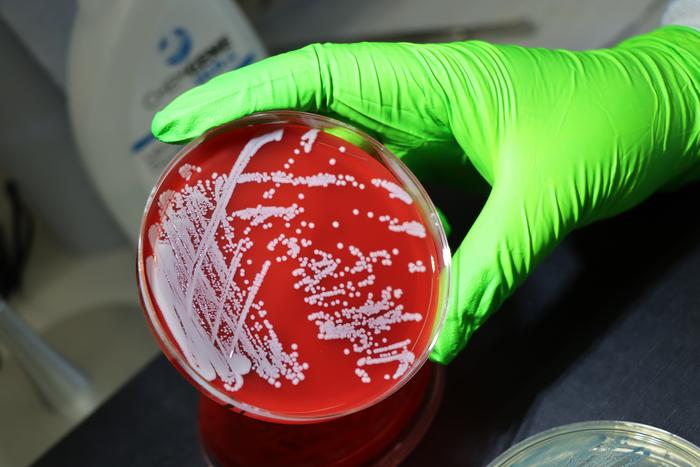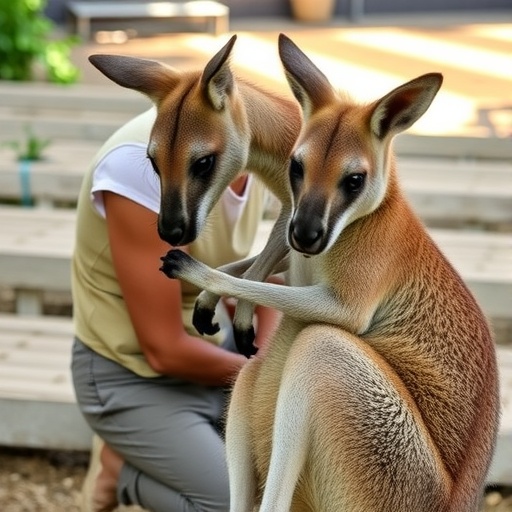
The complex interactions between humans and the bacterium Staphylococcus aureus have long intrigued scientists, especially considering its dual role in health and disease. This ubiquitous organism, while benign in many individuals, can transform into a formidable pathogen in those with weakened immune systems. Recent groundbreaking research sheds new light on the genetic adaptations that enable S. aureus to thrive within the human body, unlocking potential pathways for enhanced preventive measures, diagnostics, and therapeutic interventions against infections that these bacteria can cause.
This large-scale study, led by an international collaboration between the Wellcome Sanger Institute, the University of Cambridge, and the Institute of Biomedicine of Valencia (IBV) at CSIC, marks a significant advancement in our understanding of bacterial colonization. By analyzing thousands of genomic sequences from S. aureus isolates obtained from human carriers, researchers have pinpointed the critical genetic factors that enable this bacterium to establish a persistent presence on human skin and within the nasal cavity. This groundbreaking effort involved a thorough examination of more than 7,000 S. aureus samples derived from over 1,500 individual carriers, marking it as one of the most extensive genetic analyses of its kind.
A central finding of this research lies in the identification of specific mutations that confer advantages to certain S. aureus strains. These mutations appear to facilitate the bacteria’s ability to evade the human immune response, further complicating the challenge of treating infections. Understanding these mutations is crucial because they illuminate the evolutionary path that has allowed S. aureus strains to survive and adapt under the selective pressure imposed by the human immune system as well as antibiotic treatments.
The examination of gene alterations linked to nitrogen metabolism has emerged as particularly enlightening. These alterations suggest that S. aureus modifies its metabolic pathways to thrive in the distinct niches found within the human body, thereby revealing the intricate biological processes at play during colonization. This reveals how these bacteria can tap into available resources effectively, ensuring their survival in a competitive environment host to numerous microbial species.
In addition to highlighting genetic factors associated with basic survival, the study also uncovered mutations tied to immune evasion mechanisms used by S. aureus. Notably, some bacterial strains demonstrate an ability to hijack resources produced by neighboring bacteria, an illicit strategy researchers refer to as “cheater” cells. This opportunistic behavior illuminates a previously unrecognized aspect of bacterial competition and cooperation, showcasing how S. aureus exploits its surroundings to fortify its colonization tactics.
Moreover, this research underscores the urgent need to reevaluate current treatment strategies in light of the emergence of antibiotic resistance within S. aureus populations. Genetic analysis confirmed the prevalence of resistance mutations against key antibiotics, including fusidic acid and mupirocin. This finding reinforces the clinical significance of understanding genetic adaptations, as it could aid in the development of new diagnostic strategies and therapeutic approaches aimed at overcoming antibiotic resistance.
The implications of this research extend far beyond academic curiosity; they promise to influence clinical practice in profound ways. By dissecting the genetic adaptation mechanisms of S. aureus, it becomes possible to identify specific genetic markers that could signal heightened risk for infection. Such markers could be instrumental in developing targeted interventions, potentially revealing individuals who may be at greater risk from antibiotic-resistant strains.
Understanding the genetic landscape of S. aureus is also expected to pave the way for novel vaccine developments. Researchers hope that deciphering the bacterial processes involved in immune evasion and colonization will unveil new antigens to target in vaccine formulations. By harnessing this knowledge, scientists could potentially create robust immunizations that prevent S. aureus infections before they take hold.
Dr. Francesc Coll, a primary investigator on the study, emphasized the transformative implications of the research. He noted that insights derived from understanding bacterial responses to antibiotic treatments can inform future strategies for drug development. By identifying specific genetic changes linked to antibiotic survival, researchers can enhance diagnosis and tailor antibiotics more effectively, paving the way for improved patient outcomes.
Similarly, Dr. Ewan Harrison, another pivotal figure in the study, reinforced the importance of studying S. aureus within its natural habitat rather than solely in controlled laboratory conditions. He remarked on the enlightening nature of their findings, which reveal a more nuanced picture of how these bacteria behave in real-world environments. This knowledge is crucial for devising strategies aimed at curtailing the spread of S. aureus in healthcare settings, where the risks of severe infections are amplified.
As we continue to grapple with the implications of antibiotic resistance and microbial evolution, this research serves as a cautionary tale and a beacon of hope. The detailed understanding of S. aureus adaptations carries the potential to shape future research endeavors focused on infectious diseases, ultimately aiming to mitigate the public health threats posed by this opportunistic pathogen. Through continued investigation into the genetic underpinnings of bacterial colonization and persistence, we can heighten our preparedness and response to rising infections in an increasingly interconnected world.
The revelations stemming from this study hold promise for future endeavors not only in microbiology but also in clinical medicine, public health, and vaccine research. Identifying and understanding the pathways that facilitate bacterial survival and evasion at the molecular level opens up new avenues for intervention. The prospect of harnessing genetic insights to forecast bacterial behavior and susceptibility could absolutely revolutionize our approach to treating bacterial infections.
Through interdisciplinary collaboration and cutting-edge genomic research, significant strides have been taken to demystify the convoluted relationship between humans and S. aureus. In light of these revelations, the scientific community stands at the cusp of transformative breakthroughs in the understanding of microbial pathogenesis, setting the stage for enhanced strategies aimed at combating one of the most enduring challengers to public health.
Subject of Research: Staphylococcus aureus adaptation and colonization in humans
Article Title: The mutational landscape of Staphylococcus aureus during colonisation
News Publication Date: 13-Jan-2025
Web References: https://www.nature.com/articles/s41467-024-55186-x
References: 10.1101/2023.12.08.570284v1
Image Credits: Credit: Wellcome Sanger Institute
Keywords: Staphylococcus aureus, bacterial infections, antibiotic resistance, immune evasion, genomics, metabolic adaptation, colonization, genetic mutations, vaccine development, public health.





